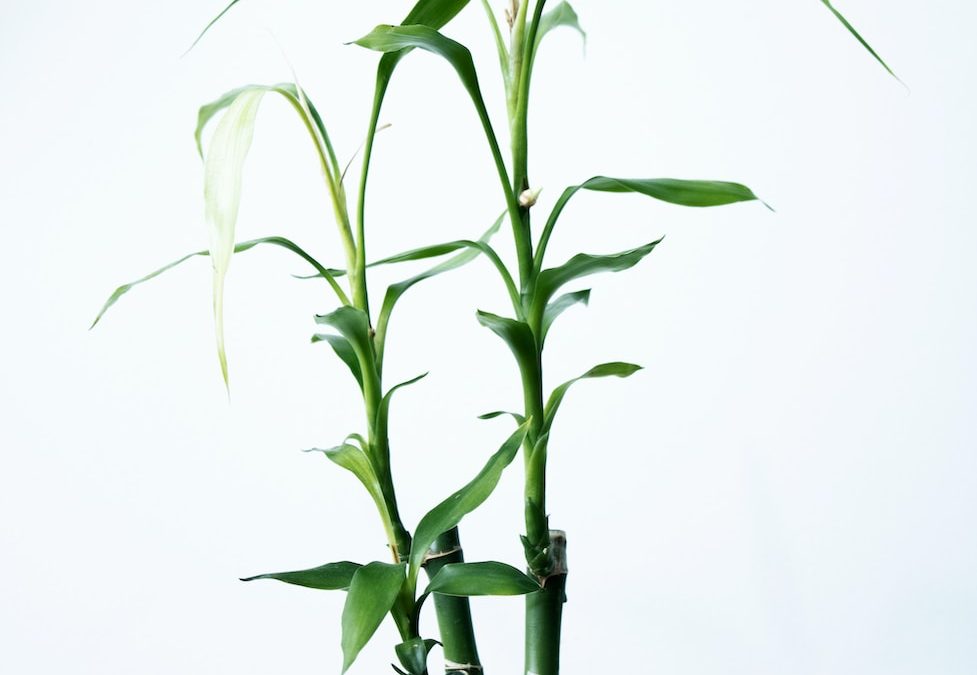Lucky bamboo, scientifically known as Dracaena sanderiana, is a popular houseplant that is known for its low-maintenance requirements, appealing aesthetics, and symbolic significance in Chinese culture. This comprehensive guide will cover everything you need to know about lucky bamboo plants, including how to care for them, their growth patterns, and the Feng Shui benefits they offer.
Contents
Caring for Your Lucky Bamboo Plant
Light Requirements
Lucky bamboo plants thrive in indirect sunlight. Direct sunlight can cause the leaves to turn yellow and burn. Place your plant near a window that receives bright, filtered light, or in a well-lit room with diffused lighting. Avoid placing the plant in a dark corner, as insufficient light can lead to slow growth and weak, leggy stems.
Watering Your Plant
Lucky bamboo plants can grow in both water and soil. When grown in water, make sure to change the water every week to prevent algae and bacteria growth. Use filtered or bottled water, as tap water may contain chemicals that can harm the plant. When grown in soil, maintain consistently moist soil, but avoid overwatering, as this can cause root rot.
Temperature and Humidity
These plants prefer a warm and humid environment, with temperatures between 65-90°F (18-32°C). Keep the plant away from drafts, air conditioners, and heating vents, as sudden temperature changes can stress the plant. To maintain humidity, place the plant on a tray filled with pebbles and water, or use a humidifier.
Fertilizing
Fertilizing your lucky bamboo is not necessary, but it can promote healthier growth. Use a diluted liquid houseplant fertilizer once every two months. Over-fertilizing can cause the leaves to turn yellow, so be cautious with the amount you use.
Growth Patterns and Pruning
Lucky bamboo plants can grow up to 2-3 feet tall indoors. They have a naturally slow growth rate, typically growing only a few inches per year. To encourage a bushier appearance, you can prune the plant by cutting the main stalk just above a node. New shoots will sprout from the cut site, resulting in a fuller plant.
To shape your lucky bamboo, you can gently twist or braid the stems together as they grow. Make sure to do this carefully, as the stems can snap if too much pressure is applied.
Feng Shui Benefits of Lucky Bamboo
Lucky bamboo is believed to bring positive energy, prosperity, and good fortune in Chinese culture. In Feng Shui, the number of stalks in a lucky bamboo arrangement has different meanings:
- 3 stalks: happiness, wealth, and long life
- 5 stalks: attracting positive energy in all aspects of life
- 7 stalks: good health and well-being
- 8 stalks: growth and abundance
Place your lucky bamboo plant in the east or southeast corner of your home or office to enhance the flow of positive energy.
Common Problems and Solutions
Yellow Leaves
Yellow leaves can be caused by direct sunlight, over-fertilizing, or poor water quality. Move the plant to a shadier location, reduce fertilizer use, or switch to filtered or bottled water.
Soft or Mushy Stems
Soft, mushy stems are a sign of root rot caused by overwatering or poor drainage. If growing in water, change the water more frequently. If in soil, allow the soil to dry slightly between waterings and ensure the pot has proper drainage holes.
Propagating Lucky Bamboo
One of the benefits of having a lucky bamboo plant is that you can easily propagate it to create more plants. To propagate, follow these simple steps:
- Choose a healthy stalk with at least one leaf joint.
- Cut the stalk at a 45-degree angle, about an inch below the leaf joint.
- Place the cutting in a container with water, ensuring the cut end is submerged.
- Change the water every few days to keep it fresh.
- After 2-4 weeks, roots will start to grow from the cut end. Once the roots are a few inches long, you can transplant the cutting into soil or keep it growing in water.
By propagating your lucky bamboo plant, you can share the positive energy and prosperity with friends and family or create more plants to place around your own space.
Purchasing a Lucky Bamboo Plant
When purchasing a lucky bamboo plant, look for plants with bright green leaves and sturdy stems. Avoid plants with yellow leaves, as this can indicate poor care or health issues. You can find lucky bamboo plants at local nurseries, garden centers, or online at reputable retailers like Amazon.
Caring for a lucky bamboo plant is simple and rewarding. With proper care, your lucky bamboo will grow and flourish, bringing a sense of peace, prosperity, and positive energy to your space.
Conclusion
Lucky bamboo plants are an attractive and low-maintenance addition to any home or office. By providing the proper care, these plants can thrive and bring a sense of tranquility and positive energy to your space. With their easy-to-care-for nature and the Feng Shui benefits they offer, lucky bamboo plants make a perfect gift or personal addition to any environment.

